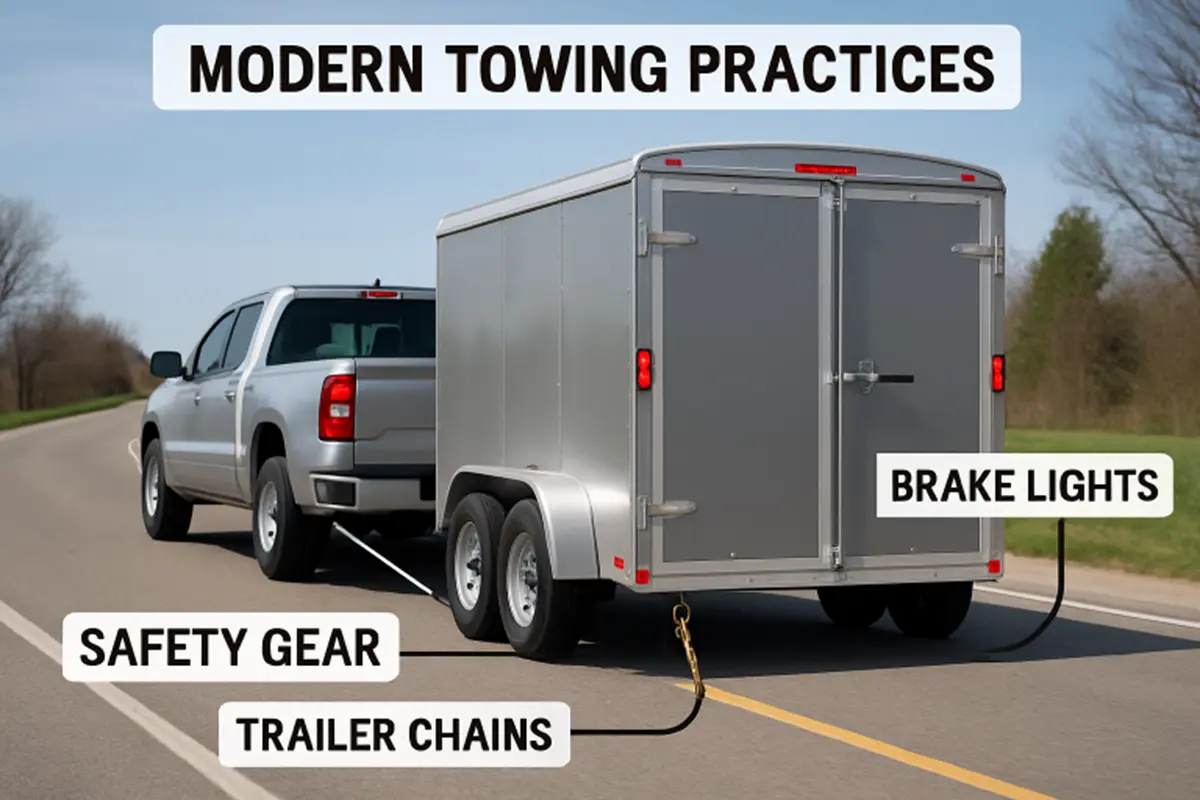Table of Contents
- Understanding Towing Safety
- Recent Legislative Changes
- Technological Advancements in Towing Safety
- Best Practices for Safe Towing
- Conclusion
For many truck owners, towing is an integral part of daily life, whether it’s hauling equipment for work or hitching up a trailer for a weekend adventure. Ensuring safety during every towing operation is no longer just a best practice but a necessity, as it protects lives, prevents damage, and avoids legal headaches. With new products and technologies on the market, such as Ford trailer hitches, alongside evolving legislation and safety standards, understanding modern towing safety has never been more crucial.
Recent years have brought both innovation and regulation to the towing industry. Lawmakers have cracked down on unsafe and unfair practices, while technology companies have delivered tools to make towing safer and more manageable. This article explores these recent changes, highlights the technologies every truck owner should know about, and breaks down tried-and-true best practices to keep you safe on every trip.
Understanding Towing Safety
At its core, towing involves coupling a trailer or secondary vehicle to your truck, requiring a keen awareness of how extra weight affects your truck’s performance and road handling. Safe towing extends far beyond simply attaching a trailer and hitting the road; it requires careful attention to details such as weight distribution, maintaining safe braking distances, and adjusting driving behaviors for longer, heavier vehicles. Failure to adhere to safety principles can lead to mishaps ranging from minor trailer sway to catastrophic highway accidents and loss of property.
According to the National Highway Traffic Safety Administration (NHTSA), improper loading and the use of suboptimal towing equipment continue to play a role in thousands of roadside incidents each year. Understanding the basics of how added weight impacts vehicle dynamics is the first step in preventing such accidents and ensuring both your safety and that of other motorists.
Keeping informed about towing innovations doesn’t just stop at the equipment; truck owners are increasingly expected to proactively monitor, adjust, and maintain their setups in response to changing loads and conditions. As safety standards and industry best practices evolve, it’s essential to stay connected to reliable resources for updates.
Recent Legislative Changes
The towing industry has long been subject to controversy over issues like predatory practices and unfair fees. In response, several states have introduced stricter regulations. Notably, Tennessee has recently enacted comprehensive reforms aimed at addressing predatory towing practices that target heavy-duty trucks. The new law now prohibits unlicensed booting and limits such actions to commercial lots, expressly aiming to curb overcharging and illegitimate asset seizures. These changes underscore the importance of understanding not only how to tow safely, but also how to protect yourself from exploitative industry practices.
Technological Advancements in Towing Safety
Advances in technology have introduced a new era of towing safety. Today’s drivers have access to tools that greatly reduce the risk of incidents on the road, providing crucial support especially during complex or challenging towing situations.
- Infrared Vision Systems: Sophisticated infrared systems now enable drivers to detect heat signatures in low-visibility scenarios, such as fog or nighttime driving, substantially enhancing awareness and reaction times. This technology is especially beneficial for longer hauls and rural routes where lighting and weather are unpredictable. Learn more about these systems and their impact in the latest automotive safety research published at The Drive.
- Stability Control Systems: Modern trucks and trailers often come equipped with advanced stability control tailored for heavy loads and variable terrains. These systems automatically detect signs of sway or rollover risk, subtly adjusting brakes and engine power to keep your setup stable—even when road conditions change suddenly.
These advancements, when combined with high-quality towing components and thorough pre-trip inspections, form the foundation of a safe towing experience.
Best Practices for Safe Towing
Know Your Vehicle’s Towing Capacity
Never exceed the maximum towing capacity specified by your vehicle manufacturer. Doing so places immense stress on your engine, transmission, and brakes, and elevates the risk of equipment failure. Truck owners should consult their manuals and verify ratings directly with manufacturers to ensure every haul is within safe limits.
Use the Right Equipment
Always choose hitches, tow bars, and chains designed for your specific truck and trailer configuration. Make sure every connection point is securely fastened and in good condition. Products engineered for your vehicle, such as specialized hitches, can provide an extra margin of safety and efficiency.
Distribute Weight Evenly
Improper weight distribution is a leading cause of trailer sway. Heavier items should be placed low and balanced over the trailer’s axles, and all loads should be securely tied down. Even small imbalances can have significant consequences at highway speeds.
Regular Maintenance and Inspections
Inspect your truck and trailer thoroughly before each trip. Pay special attention to tire tread and pressure, brake lights, and the integrity of the hitch. Frequent maintenance extends the lifespan of your equipment and helps identify potential issues before they lead to failure on the road.
Know Local and State Towing Laws
Towing regulations can vary widely. Always review state-specific guidelines regarding trailer brakes, maximum towing speeds, and equipment requirements to ensure compliance. Being knowledgeable about local laws helps avoid costly penalties and ensures your operation is compliant everywhere you travel.
Conclusion
Modern towing safety requires a multifaceted approach—balancing the basics of safe driving and equipment management with an understanding of both evolving laws and new technologies. By embracing the latest innovations, staying informed about regional regulations, and adhering to recognized best practices, today’s truck owners can enjoy peace of mind while keeping America’s roads safer for everyone.
Also Read-Why Hair Shows Are Turning Into Must-Attend Tech and B2B Innovation Events

